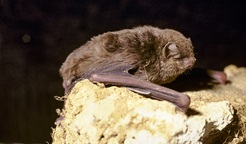Jenolan Karst Conservation Reserve
Learn more
Learn more about why this park is special
Jenolan Karst Conservation Reserve is a special place. Here are just some of the reasons why:
Historic tourism

Jenolan Caves is one of Australia's first tourist attractions; with land having first been set aside for public recreation and enjoyment in 1866. In the years following this, a number of buildings were constructed, the most notable being Caves House; an excellent example of early Victorian architecture and comfortable heritage accommodation. Innovations in engineering and cave lighting are evident - particularly in Chifley Cave. There are more than 300 caves within the Reserve, all containing a range of geological features and formations, like stalactites and stalagmites, plus rarer helictites and stromatolites The best way to find out about the caves is on a guided or self-guided tour. There are eleven caves to choose from.
- Jenolan River walking track Jenolan River walking track and Blue Lake are closed for road repairs and upgrades until 2026.
- McKeown's Valley walking track McKeown's Valley walking track is closed for road repairs and upgrades until 2026.
Greater Blue Mountains Area World Heritage Property

It is truly amazing to think that a city the size of Sydney has a large World Heritage Area on its doorstep. The World Heritage listing recognises the geographic, botanic and cultural values of the area. The forests of the Greater Blue Mountains Area World Heritage Property have been described as a natural laboratory for the evolution of eucalypts; and more than 90 different eucalypt species occur here, some 13 per cent of all eucalypt species in the world. They grow in a great variety of communities, from tall closed forests, through open forests and woodlands, to the stunted mallee shrublands on the plateaus.
Binomil

The beautiful and mysterious Jenolan Caves holds special significance to the Gundungurra people who knew it as 'Binoomea' meaning 'dark places'. According to Gundungurra Elder, Old Jimmy Lynch, Aboriginal people knew the caves, carrying sick people as far as the subterranean water which they believed to have great curative powers. The Dreamtime myth of Gurrangatch relates to the forming of Wombeyan and Jenolan Caves. The caves are said to have been formed during a contest between Gurrangatch, a mythical being that was part fish and part reptile, and Mirragan, a legendary tiger cat.
Plants and animals protected in this park
Animals
-

Eastern bentwing-bat (Miniopterus schreibersii oceanensis)
Eastern bentwing-bats congregate in caves across the east and north-west coasts of Australia, in colonies of up to 150,000. These small Australian animals weigh around 13-17g and can reach speeds of up to 50km per hour. Eastern bentwing-bats use both sight and echolocation to catch small insects mid-air.
-

Platypus (Ornithorhynchus anatinus)
One of the most fascinating and unusual Australian animals, the duck-billed platypus, along with the echidna, are the only known monotremes, or egg-laying mammals, in existence. The platypus is generally found in permanent river systems and lakes in southern and eastern NSW and east and west of the Great Dividing Range.
-

Common brushtail possum (Trichosurus vulpecula)
One of the most widespread of Australian tree-dwelling marsupials, the common brushtail possum is found across most of NSW in woodlands, rainforests and urban areas. With strong claws, a prehensile tail and opposable digits, these native Australian animals are well-adapted for life amongst the trees.
-

Bare-nosed wombat (Vombatus ursinus)
A large, squat marsupial, the Australian bare-nosed wombat is a burrowing mammal found in coastal forests and mountain ranges across NSW and Victoria. The only other remaining species of wombat in NSW, the endangered southern hairy-nosed wombat, was considered extinct until relatively recently.
-

Short-beaked echidna (Tachyglossus aculeatus)
One of only 2 egg-laying mammals in the world, the short-beaked echidna is one of the most widespread of Australian native animals. Covered in spines, or quills, they’re equipped with a keen sense of smell and a tube-like snout which they use to break apart termite mounds in search of ants.
-

Spotted-tailed quoll (Dasyurus maculatus)
The spotted-tailed quoll is the largest remaining carnivorous marsupial on the Australian mainland. It’s protected as a vulnerable species in NSW.
Look out for...
Eastern bentwing-bat
Miniopterus schreibersii oceanensis

Eastern bentwing-bats congregate in caves across the east and north-west coasts of Australia, in colonies of up to 150,000. These small Australian animals weigh around 13-17g and can reach speeds of up to 50km per hour. Eastern bentwing-bats use both sight and echolocation to catch small insects mid-air.
